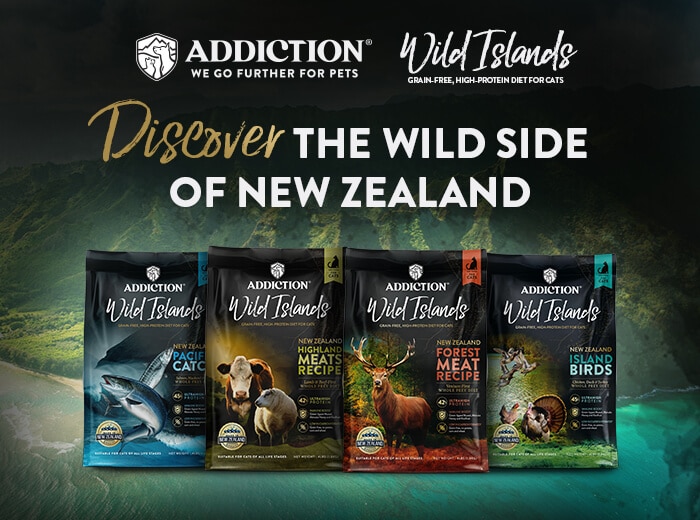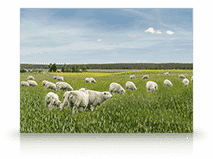Do you have an itchy cat, even when it’s not flea season and there’s not a flea in sight? Does your kitty have dandruff or dry skin? Some cats get extra oily skin from food allergies. Others develop little pustules on their chins or the base of their tail. Some cats throw up more often or will have runny stools. If your cat is suffering from any of these, it may be a food intolerance. The first thing you should always do is check with your vet, as any or all of these could be signs of a more serious condition. Once you’ve ruled those out, take a look at your cat’s diet to find the culprit.
 Lots of cat foods contain chicken or poultry or seafood. These are fine proteins, but if fed a diet exclusively of these ingredients, most cats can develop an intolerance. This is where feeding a novel protein can be helpful. A novel protein is a protein that most animals haven’t been fed before. The dictionary defines ‘novel’ as ‘new and not resembling something formerly known or used.’ We use proteins like brushtail, unagi and venison, which usually fall into the novel category for most cats. Not only have most cats not eaten brushtail and unagi, most people haven’t heard of it either!
Lots of cat foods contain chicken or poultry or seafood. These are fine proteins, but if fed a diet exclusively of these ingredients, most cats can develop an intolerance. This is where feeding a novel protein can be helpful. A novel protein is a protein that most animals haven’t been fed before. The dictionary defines ‘novel’ as ‘new and not resembling something formerly known or used.’ We use proteins like brushtail, unagi and venison, which usually fall into the novel category for most cats. Not only have most cats not eaten brushtail and unagi, most people haven’t heard of it either!
Brushtail is a marsupial that was brought into New Zealand for the fur trade. Since it’s a non native species, it didn’t have natural predators and in a short period of time began overpopulating and destroying natural forestation. We found that brushtail contained extremely high levels of Omega 3 fatty acids and was very palatable to finicky animals, a great combination for allergic pets. We teamed up with the New Zealand government to use brushtail meat in our pet foods and have had great success ever since.
If you suspect your cat has food allergies, the first thing to do is to put them on a simple diet with only one protein. Use a notebook to keep track of foods, as this sometimes can take a while and it’s helpful to know what you’ve already tried. While you are doing the elimination diet, it’s important to not feed your cat table scraps or treats unless they have the same ingredients as the food. The idea is to narrow down what could be causing the problem. So, you might start with New Zealand Venison and Apples or Hunter’s Venison Stew. You would feed this diet exclusively and would pay close attention to your cat’s symptoms. If the symptoms got worse, switch to a new protein. If the symptoms got better, you would stay on the Venison until everything cleared up. At that point, you would begin to add in other proteins.
It’s important to add in more proteins as soon as your cat is feeling/looking normal. Having a wide variety of proteins builds better digestion and helps prevent future allergies. A quality rotation diet is the best diet for your cat. Since we have multiple proteins available, including rabbit and buffalo, there’s lots of choices even for cats with allergies.











